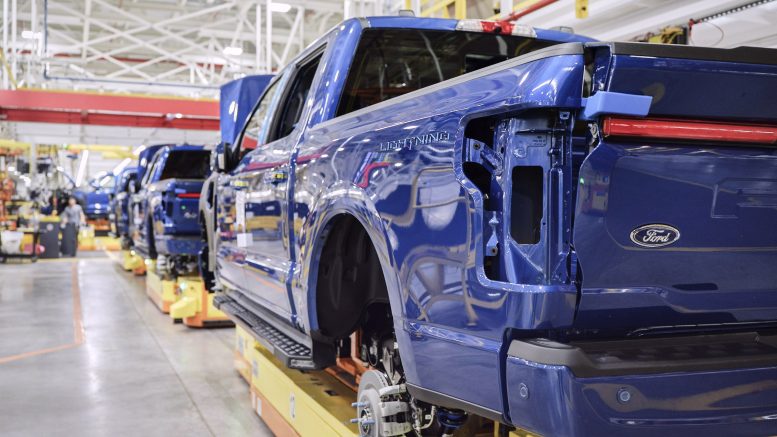Near-term macroeconomic conditions could slow the uptake of plug-in electric vehicles, but strong sales growth will persist through the medium term, an industry event heard this week in Vancouver.
Capitalight Research MD Tom Brady sounded the alarm during a presentation at the Association for Mineral Exploration B.C.’s annual Roundup event. He says unrealistic expectations for the energy transition could undermine the bullish demand scenarios currently accepted as the norm as the energy transition unfolds.
For example, global automotive market sales are expected to more than double to nearly 125 million by 2030, with ‘base case’ scenarios pointing to 35% PEVs in the mix. By 2050, most scenarios have the figure at 60%.
“This will require global lithium supplies to increase three and seven times, respectively. Not likely,” said Brady.
Declining ore grades for copper also pose a particular headache to the supply side of the copper equation. Copper grades are currently between 30-40% lower compared with 2000.
Despite these challenges, China’s ‘reopening’ following Covid is expected to buoy many infrastructure metals prices, particularly in the second half of 2023. China’s urbanization rate is climbing from 60% to the OECD average of 80% by 2050, calling for a wall of new demand.
Over the long term, commodity prices will remain driven by global demographic trends. According to the analyst, the following metals supercycle is caused by increased demand and supply constraints.
Mark Ferguson, director of Metals & Mining Research at S&P Global, points to a manufacturing slowdown and near-term recessionary risk as weighing on the 2023 economic growth outlook.

Mark Ferguson, director of Metals & Mining Research at S&P Global
In his view, trends such as passenger EV adoption rates are being challenged by weaker consumer confidence and reduced affordability.
As a result, S&P has also recently found reduced battery demand across the plug-in EV and consumer electronics segments.
Nevertheless, Ferguson notes a strong PEV sales outlook despite near-term headwinds, supported by greater use of lithium-iron-phosphate batteries and nickel-intensive cathodes.
Meanwhile, he flagged that local regulatory hurdles to creating new supply chains remained. Local sourcing rules make qualifying for the EV tax credit in the U.S. more challenging to meet in one to two years.
Wall of demand
Ferguson expects global primary nickel output to increase by 1.2 million tonnes across 2021-2026 as Indonesian high-pressure acid leach (HPAL) output expands. Indonesia is expected to account for 44.% of global production by 2026.
Nickel output is expected to grow at 7.9% CAGR between 2021-26. Ferguson notes that nickel prices remain highly volatile, but a market surplus might dull the price growth outlook through 2026.
Ferguson suggests market deficits are expected for lithium despite new supplies coming online through 2028. Hard rock projects and Australian assets lead supply additions. Australia will become the largest lithium supplier amid rapid market growth through 2027.
“The unpreceded high lithium price environment has reduced project payback periods to less than one year and below six months for concentrate-based projects,” said Ferguson.
Meanwhile, Indonesia and the DRC are expected to dominate the cobalt market supply growth story through 2027, despite DRC pipeline visibility dropping off beyond 2025. The DRC is slated to produce 72.3% of global cobalt supplies by 2023, followed by Indonesian HPAL output.
Indonesia is set to overtake the DRC as the dominant producer by 2027 after growing supplies six-fold.
Ferguson flagged the potential for lithium and cobalt prices to correct but remain at high levels, enough to incentivize pipeline development. Lithium prices peaked in 2022 but may stay above US$60,000 per tonne through 2026, Ferguson suggested. Cobalt prices are expected to average US$18.4 per lb. amid an expected deficit from 2026.
Meanwhile, exploration budgets for lithium surged to nearly US$500 million, while cobalt budgets totalled about US$70 million.





Be the first to comment on "Weaker consumer confidence dents plug-in electric vehicle uptake, critical minerals briefing hears"